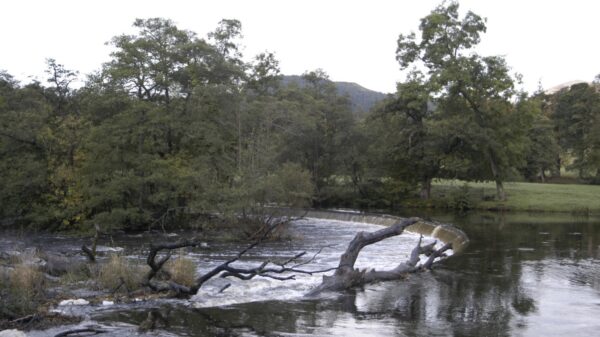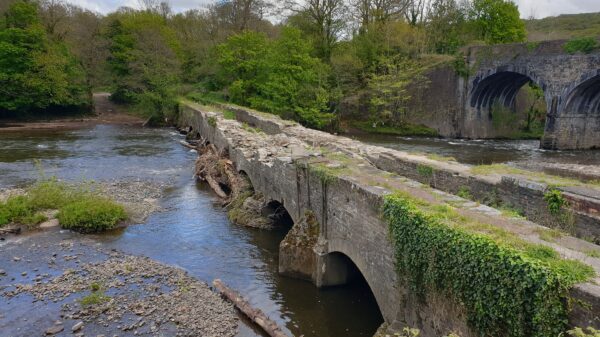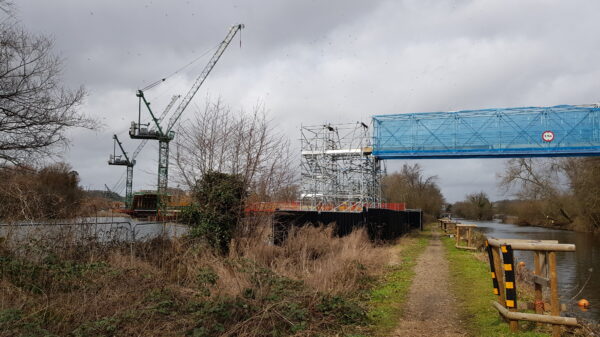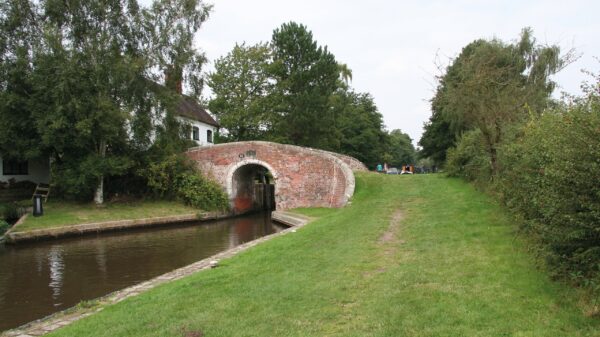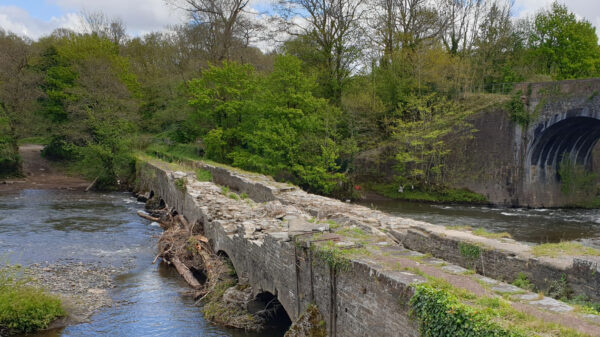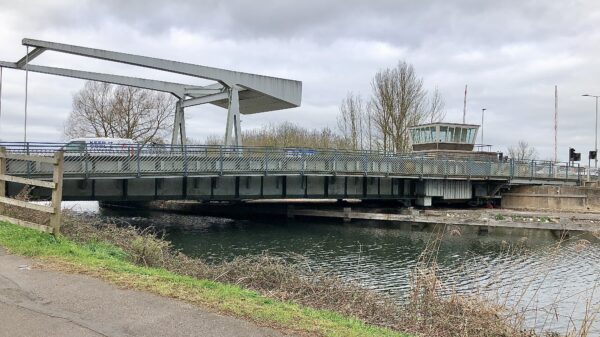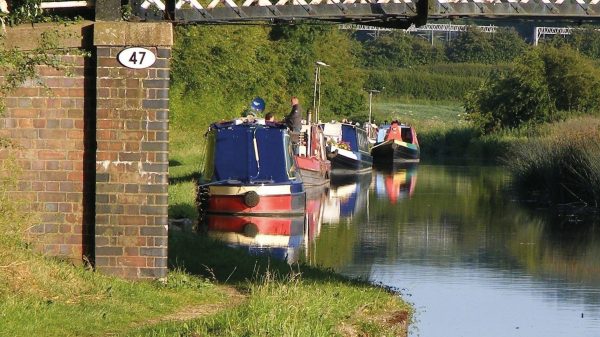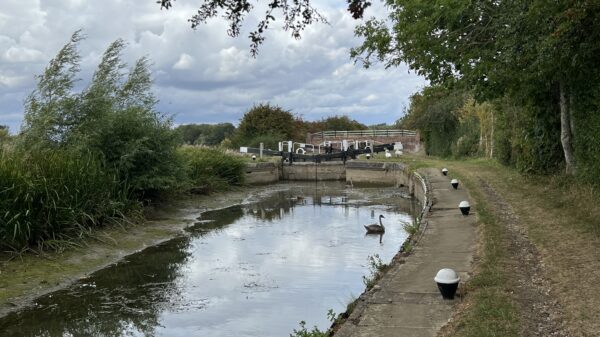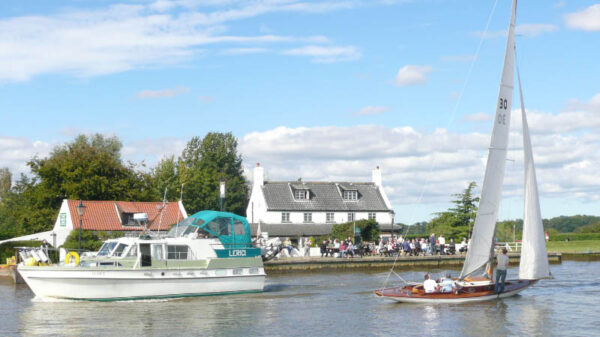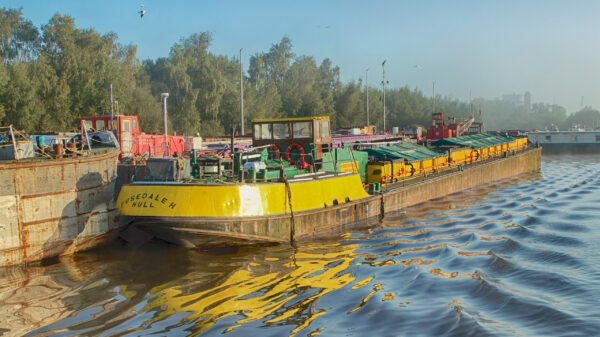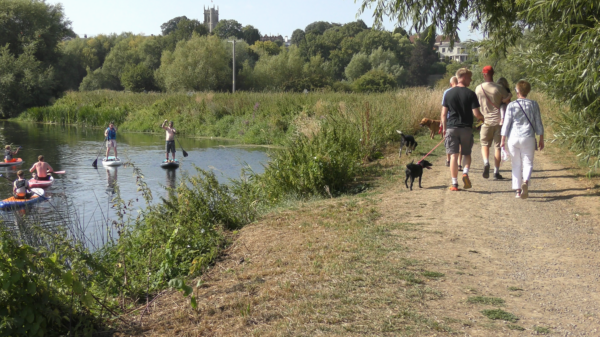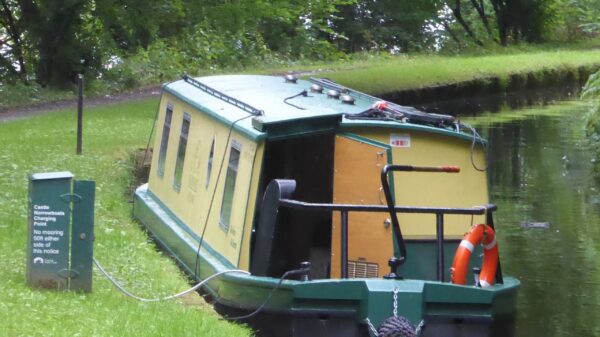Invasive species are a problem because of the threat that they can pose to the native environment, the economy and the public’s health.
Along the waterways, invasive plant species can cause navigation and water control problems. In addition, they can reduce habitat availability and the quality of the water.
Many types of invasive plant species are found along waterways. The four most common are: Himalayan Balsam, Japanese Knotweed, Floating Pennywort and Giant Hogweed.
Himalayan Balsam
Background
- Native to the Himalayas.
- Introduced to the UK as a garden plant in the mid-nineteenth century.
- First recorded in the wild in the UK in 1855.
- Now widespread and common across the UK primarily on the banks of waterways and other damp locations.
Identification Guide
- Stems are hollow and greeny red early in the year, turning a pinky red in the spring.
- Leaves are green, slender and up to 15cm long.
- Flowers appear between June and October, are slipper shaped and range in colour from a purplish pink to a very pale pink.
- The plants can grow to over 3m in height.
Threat
- Can take over whole stretches of waterway banks crowding out native species.
- Dies back in the winter leaving banks bare and succeptible to erosion, which can cause navigational problems and disrupt fish spawning beds.
- Spreads very quickly through explosive release of up to 800 seeds per plant.
Control
- Himalayan Balsam can be easily removed by simply pulling plants from the soil making it an ideal volunteer activity.
- Plants can be disposed of by burning or composting if not in flower.
- Plants should be removed before seed pods develop to avoid further dispersal of seeds.
- Seeds can remain dormant in the soil for up to three years so sites should be revisited annually to make sure the plant is completely removed.
- Himalayan Balsam should be reported via the Recording Native Species Counts scheme.
We campaign against the spread of Himalayan Balsam. Our local branches organise work parties where volunteers visit known Himalayan Balsam hot-spots and pull the plants up before they go to seed. If plants are removed annually, they will stop growing in that area.
JAPANESE KNOTWEED
Background
- Native to Japan, Taiwan and northern China
- Introduced to the UK as an ornamental plant in the nineteenth century
- Now widespread and common across the UK, mostly in the south-west of England, south Wales and Greater London
- Mostly found along waterway banks and in urban areas
Identification guide
- Main stems of a developed plant has a purple speckled appearance with regular nodes (like bamboo)
- Side stems zig-zag with a shield shaped, flat based, green leaf
- In the summer spays of small white flowers appear on long stems
- There is a rhizome crown at the base of the plant
- The plant grows to around 2m in height
Threat
- Grows into dense thickets and crowds out native species.
- Contributes to bank erosion and increases likelihood of flooding.
- Can cause structural damage as stems grow through materials such as asphalt.
- Does not produce seed in the UK but spreads by dispersal of root pieces, this can easily happen via waterways.
- It is not the most environmentally damaging of invasive species but causes economic problems as it is expensive to remove.
Control
- Japanese knotweed can be controlled by cutting. This is a laborious task which must be carried out accurately and repeated every two to four weeks throughout the growing season over a number of years.
- The use of herbicides is the most affective form of control but this should only be undertaken by qualified individuals.
Floating Pennywort
Background
- Native to southern coastal states in the USA.
- Introduced in the UK as an ornamental plant for ponds.
- First recorded in the wild in the UK in 1990.
- Now common in the south east of England and spreading across the British Isles.
- Found emergent or floating on still or slow moving waterways.
Identification guide
- Stalks are fleshy with fine hair-like roots.
- Leaves are green, shiny and kidney shaped with crinkly edges and a width of around 7cm. Leaves can be emergent or floating.
- Tiny white flowers may appear between July and August but are rare.
Threat
- Can grow up to 20cm a day forming thick mats that quickly dominate waterways making navigation difficult and impeding water flow.
- Can outcompete other species by blocking sunlight, deoxygenisation and preventing insects from reaching the water’s surface.
- Spreads easily via root segments that break off and move through the waterways via currents or boats.
Control
- The plant is difficult to control as the smallest fragment can lead to the plant re-establishing.
- Mechanical removal is best but the area should be netted off to prevent plant fragments from travelling downstream.
- Once the main bulk has been removed it is important to go over the area and remove all smaller fragments to prevent spread.
- Chemicals can be used but only by those with suitable training.
- Floating Pennywort should be reported via the Recording Native Species Counts scheme.
Giant Hogweed
Background
- Native to the Caucasus Mountains.
- Introduced to the UK as an ornamental plant in 1820.
- First recorded wild in the UK in 1828.
- Now widespread and common across much of the UK with extensive infestations in Scotland and the north of England, often found by large waterways.
Identification guide
- Produces flowering blotchy purple stems that are up to 5m in height and 5-10cm in diameter with sharp bristles.
- Produces white or pinkinsh umbrella shaped flowerheads with a diameter of up to 80cm.
- Leaves are sharply divided/serated with bristles on the underside and up to 3m in size.
- Once fully grown Giant Hogweed is easily identified due to its size but can be confused with Hogweed while still growing.
Threat
- Giant Hogweed can grow in thick stands crowding out native species.
- The plant produces a phytotoxic sap, even the smallest amount of contact with skin can cause heightened photosensitivity and severe blistering. Heightened photosensitivity can last for several years.
Control
- Control is difficult because of the plant’s sap. Cutting the plant should only be attempted by professionals who are wearing full protective clothing. The stem must be cut below ground.
- Chemical control can be carried out between April and May by those with the relevant qualifications. The only chemical known to work against Giant Hogweed that can be used by waterways is Glyphosate.
- Plant remains should always be disposed of carefully as the toxic affects of the sap can last for several days.
- It is thought that seeds can lie dormant in the soil for between seven and fifteen years so areas will have to be retreated annually.
WHAT CAN YOU DO IF YOU SPOT AN INVASIVE SPECIES?
If you think you have spotted an invasive plant species on a waterway report it to the relevant navigation authority.
To stop invasive species spreading, when you leave the water:
- Check your equipment (such as kayaks and paddles) and clothing for live organisms.
- Clean and wash all equipment, footwear and clothing thoroughly. If you do come across any organisms, leave them at the water body where you found them.
- Dry all equipment and clothing – some species can live for many days in moist conditions. Make sure you do not transfer water elsewhere.
More information on invasive species can be found at the GB Non-native Species Secretariat website.

